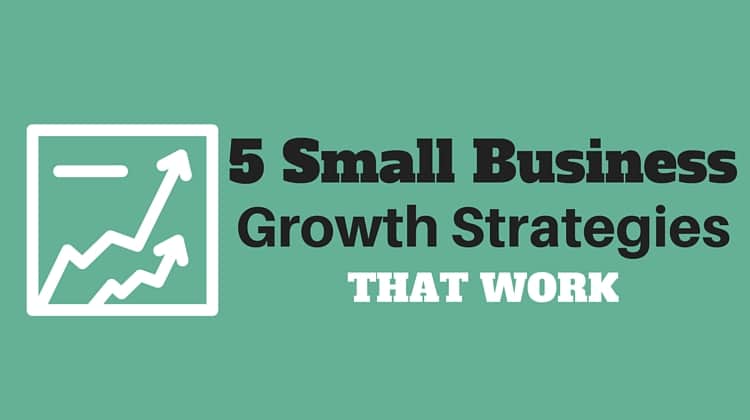Want to grow your small business? Most business owners do, but how do you do it? Fortunately, there are tried-and-true methods for small business growth that have been proven to work again and again.
These are the fundamental growth strategies that all businesses—regardless of size, location, or industry—can follow to drive new revenues. Whether you’re Apple, Google, or a small business, you can use one or more of these growth strategies to achieve higher levels of success.
That’s not to say that each growth strategy doesn’t come without risks, because they do. However, with the right planning, implementation, and team, you can use them to grow your small business!
1. Enhance Your Product
You can grow your small business by improving your product(s) or service(s) to offer something new or different. For example, think of all of the features Nike adds to its sneakers to enhance them. How about Reebok? Did anyone really need sneakers with a pump in the tongue when they debuted back in the 1980s? Nope, but the enhancement surely increased sales because people bought Reebok Pump sneakers, and they even made a comeback in 2015 as the ZPump Fusion.
Questions to Ask Yourself:
How can you enhance your current product (or service) to make it better?
What features can you add?
Are there new marketing techniques you can use to draw attention to features or benefits of your product that consumers might not already be aware of?
2. Broaden Your Audience
Another strategy to grow your small business is to further penetrate the market you operate in by getting people outside of your current target audiences to start buying your product or service. Remember when Buick wanted to appeal to a younger and more diverse audience? The company hired Tiger Woods to appear in its commercials.
Questions to Ask Yourself:
How can you modify your marketing tactics and messages to appeal to new audiences?
Where can you advertise your product or service to attract new audiences?
What do new audiences want from a product or service like yours, and does your product or service offer that? Or do you need to enhance your existing product or service (or develop a new product or service)?
3. Expand Your Geography
Thanks to the internet, any small business can be a national or international business fairly easily. If you can offer your products and services across borders, then you can expand your small business beyond your local area. Keep in mind, this growth strategy requires a lot of research and planning. There are financial, insurance, tax, and legal implications that you need to consider fully!
Questions to Ask Yourself:
Where are there more customers like those in your target audience?
Are those customers likely to be interested in your product or service?
How do you have to adjust your prices and processes to deliver your products and services to a new geography?
4. Diversify Your Market
What market do you sell your products or services in? Could your brand do well in another market? For example, PF Chang’s is a popular restaurant that successfully expanded into the frozen foods market by offering pre-packaged, frozen meals in grocery stores.
Questions to Ask Yourself:
What product or service could you bring to a different market in a different or better way than the other brands that already compete in that market?
What markets does it make sense for your brand to enter without confusing consumers about your brand promise and harming your brand in its current market(s)?
Do you have the resources to not just enter a new market but successfully compete against the established market leaders?
5. Develop New Products
When none of the above will work, you can develop completely new products or services that will appeal to your current customers and/or to new customers. In other words, new products can help you increase single customer purchases and generate purchases from customers who have never bought from your small business before. For example, when McDonald’s wanted to appeal to health-conscious consumers, it developed a new line of healthier menu options.
Questions to Ask Yourself:
What needs do consumers have and problems do they need to solve that I could deliver with a new product or service?
How much will it cost to develop and launch a new product?
Do I have the right people, money, and resources to successfully develop and launch a new product?



No comments:
Post a Comment